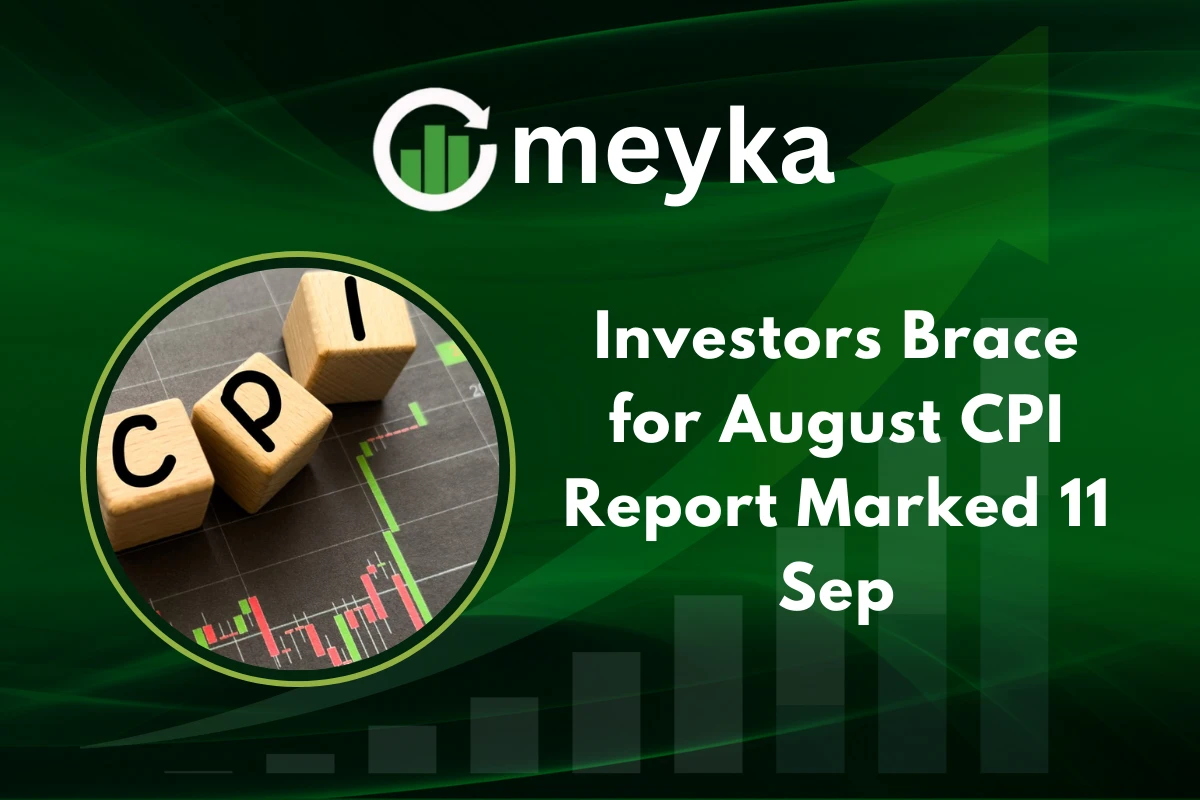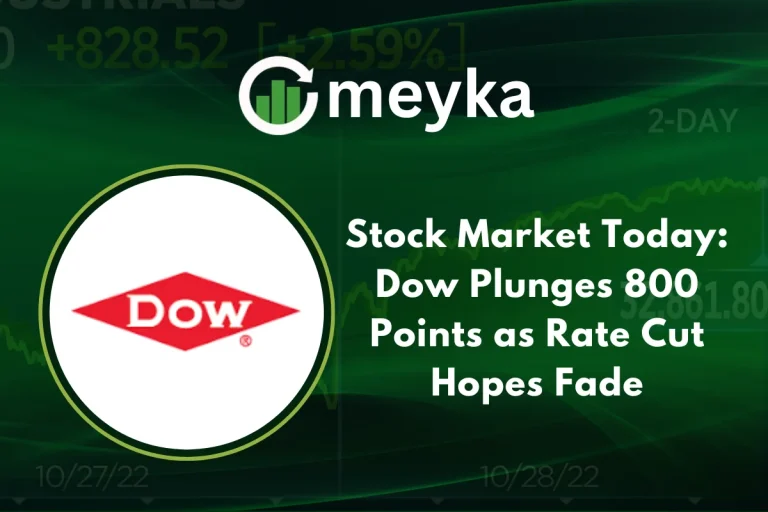Investors Brace for August CPI Report Marked 11 Sep
CPI Report has moved to the front of investors’ minds as the September 11 release could reshape expectations for the Federal Reserve and global markets. Forecasters are watching whether the August reading validates signs of cooling in producer prices, or instead shows renewed pressure from tariffs and energy.
Why does this CPI Report hold extra weight? Because the Federal Reserve meets later this month, and the CPI print will be a primary input on whether to time policy easing sooner or delay it.
CPI Report: why it matters for markets and the Fed
The CPI Report is the most visible gauge of consumer price trends, and investors watch both headline inflation and core CPI to understand how broad price pressures are moving. A hotter-than-expected report would cool hopes for an immediate Fed cut, lift bond yields, and likely compress equity multiples.
A softer read would give the Fed room to ease and could ignite a relief rally in risk assets. Because the Fed is data dependent, this single release can change the benchmark path for interest rates in the near term.
CPI Report: preview of August inflation numbers and expectations
Economists polled by market trackers expect headline CPI to rise to roughly 2.9% year on year, up from 2.7% in July, with a monthly increase near 0.3%. Core CPI, which excludes food and energy, is projected to be around 3.1% annually.
Those forecasts reflect tariff pass-through, higher energy prices, and lingering supply pressures in some durable goods; together, they explain why traders are nervous ahead of the print. MarketWatch and other consensus trackers show these median estimates, and that clustering is driving cautious positioning.
Core CPI versus headline CPI: What investors are watching
Core inflation is a key focus because it strips out volatile categories, highlighting whether service inflation and shelter costs are persistent. If core CPI comes in hotter than expected, investors will worry that services inflation remains sticky, which could delay cuts.
If core cools, that would reinforce the narrative that inflation is moderating outside transitory pockets, and investors would likely increase exposure to cyclical sectors.
Could softer inflation spark a market rally? Yes, but traders will study rent and medical care breakdowns to judge durability.
CPI Report: Wall Street and S&P 500 reaction ahead of the data
Equities have rallied this year, yet Swissinfo reports the S&P 500 lost some steam ahead of the CPI release as investors trimmed exposure into the event. A hotter CPI would likely pressure high multiple growth stocks and widen credit spreads, while a softer print could send a strong relief bid into cyclical names and small caps.
Bond markets, which price the Fed’s path, may reprice quickly: the 10-year yield often moves sharply in the minutes after the CPI release. Portfolio managers say rapid risk adjustments are common when a major inflation surprise lands.
CPI Report: the Federal Reserve’s policy dilemma and interest rate path
The Fed faces a central trade-off: support the labor market, while ensuring inflation returns sustainably to the target; the CPI Report sits at the center of that choice. Officials have left the door open to modest easing, yet decisions remain data-dependent.
If the report shows persistent inflation pressures, the Fed may delay cuts or trim the scale of easing; if it cools, market pricing for a 25 basis point reduction later this month will firm. The CPI Report, therefore, functions as the proximate signal for near-term monetary policy.
CPI Report: investor sentiment and analyst forecasts
Investor commentary ahead of the print shows a mix of caution and opportunism. Economist Mohamed El Erian urged prudence in public posts, reminding traders that policy is reactive to fresh data.
Other market commentators flagged elevated option flows and protective hedges, evidence that many investors are protecting against an upside surprise while some are positioned to buy a soft reading.
Social platform snapshots reflect hedging, tactical buying, and differing interpretations of the same signals, illustrating how investor sentiment before the CPI Report is split.
CPI Report: global market implications
US inflation data has an outsized global impact; stronger US CPI tends to push US yields higher, tightening global financial conditions and pressuring emerging market currencies. Softer CPI could ease those pressures and reduce the urgency for synchronized tightening abroad.
Investors in Europe and Asia will use the CPI Report to recalibrate exposure to US rates, commodities, and cross-border bond allocations, making this print important well beyond US markets.
CPI Report: What sectors may benefit or struggle after the report
If inflation cools, cyclical sectors like consumer discretionary and housing-related stocks may gain as consumers feel relief and borrowing costs ease. A hotter CPI would likely help financials, where higher yields can bolster net interest margins, while high valuation technology names could suffer under renewed rate concerns.
Energy and commodity firms will track the headline closely, reflecting direct exposure to price moves. Portfolio and asset allocators are preparing rotation scenarios tied to the CPI Report outcome, ready to adjust within hours of the release.
Conclusion
The CPI Report on September 11 is a pivotal data point that can change Fed expectations and move markets in short order. Scenarios run from a soft print that cements expectations for easing to a hotter reading that forces caution and a reprice of rate cuts.
Traders and investors should watch headline inflation, core CPI, shelter and services components, month-on-month changes, and immediate moves in bond yields and S&P 500 futures.
Could softer inflation spark a market rally? Yes, but only if the detailed components show durable cooling and not just a one-month blip.
FAQ’S
CPI has inched higher in August due to energy and tariff effects, but core inflation shows signs of cooling gradually.
Analysts expect September’s CPI to hover around 2.9–3 percent year on year, with core CPI slightly above 3 percent.
No, August headline CPI was closer to 2.9 percent, higher than the 2.5 percent mark some investors were hoping for.
The Fed does not set CPI, but it monitors the Bureau of Labor Statistics data, with August showing inflation still above the 2 percent target.
A CPI increase is usually bearish for stocks, since it raises fears of tighter Fed policy and higher interest rates.
Yes, stocks often dip when CPI rises more than expected, as investors anticipate slower growth from higher borrowing costs.
High CPI is generally bad for consumers and markets, as it erodes purchasing power and pressures the Fed to keep rates elevated.
Economists expect CPI in 2025 to trend closer to 2.5 percent if energy stabilizes and core services inflation continues to ease.
Disclaimer
This content is for informational purposes only and not financial advice. Always conduct your research.






